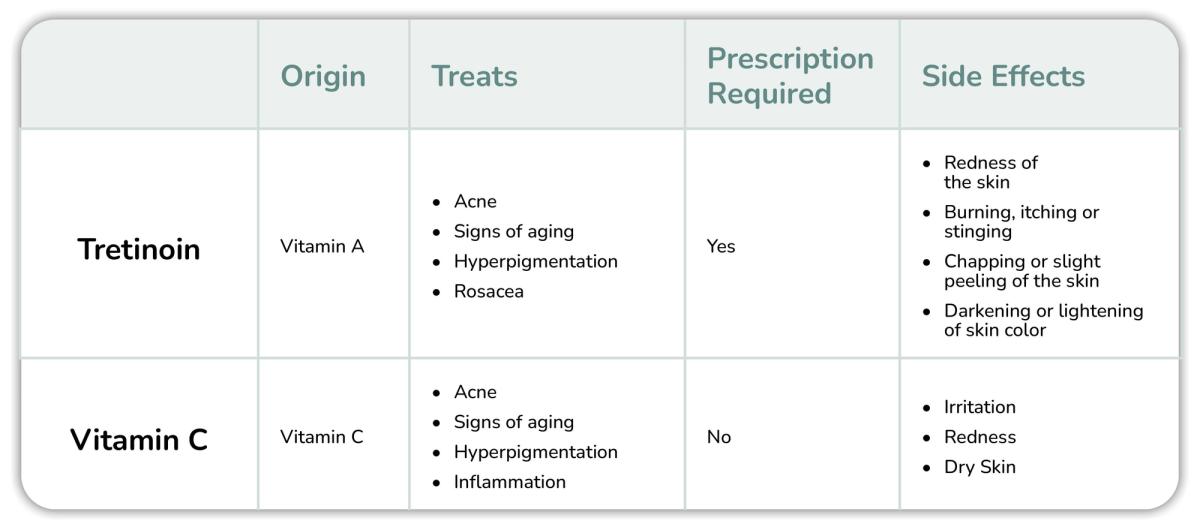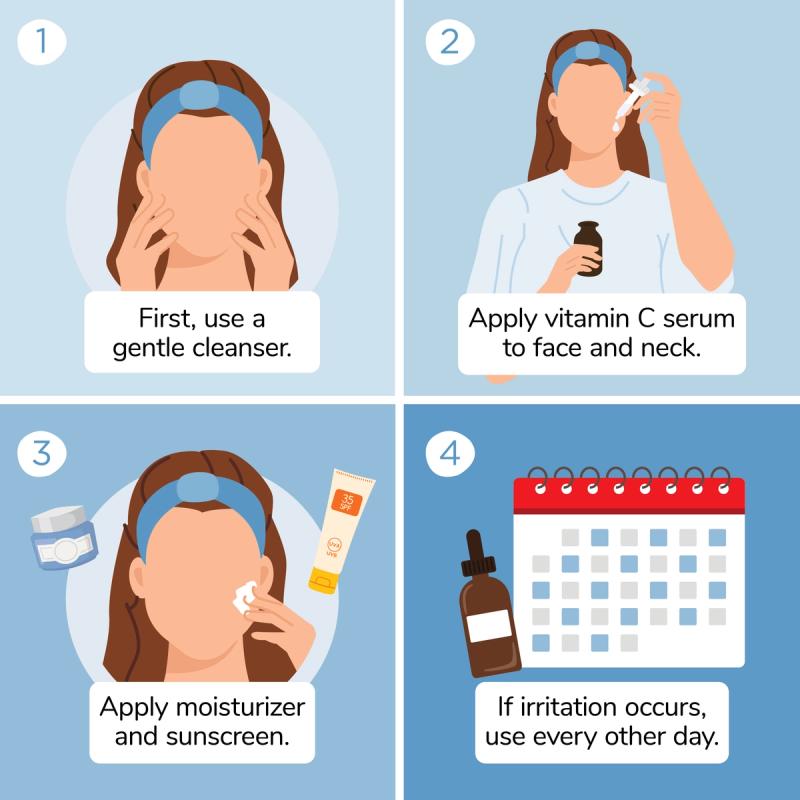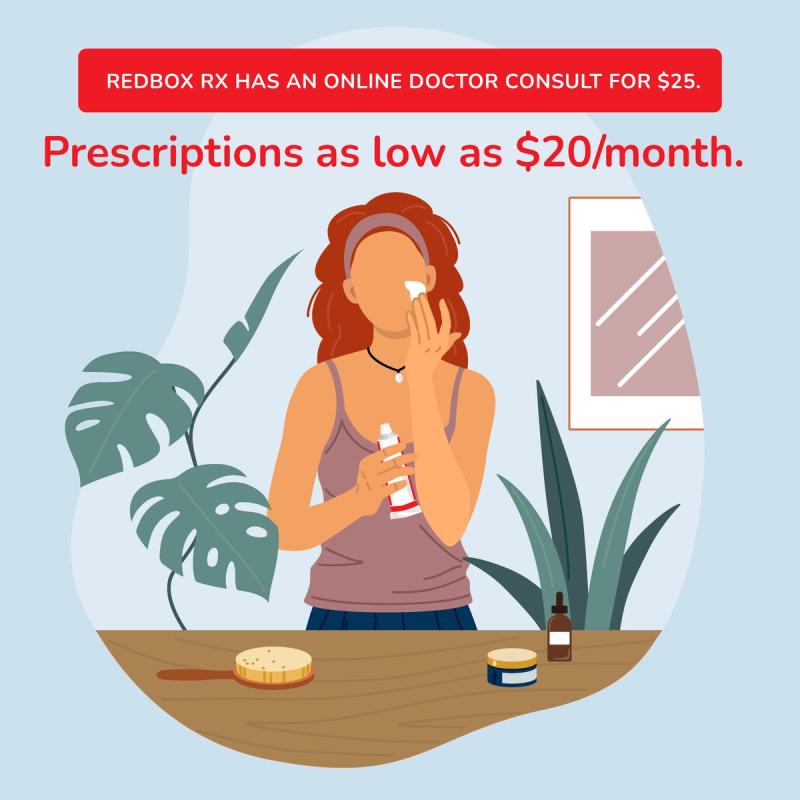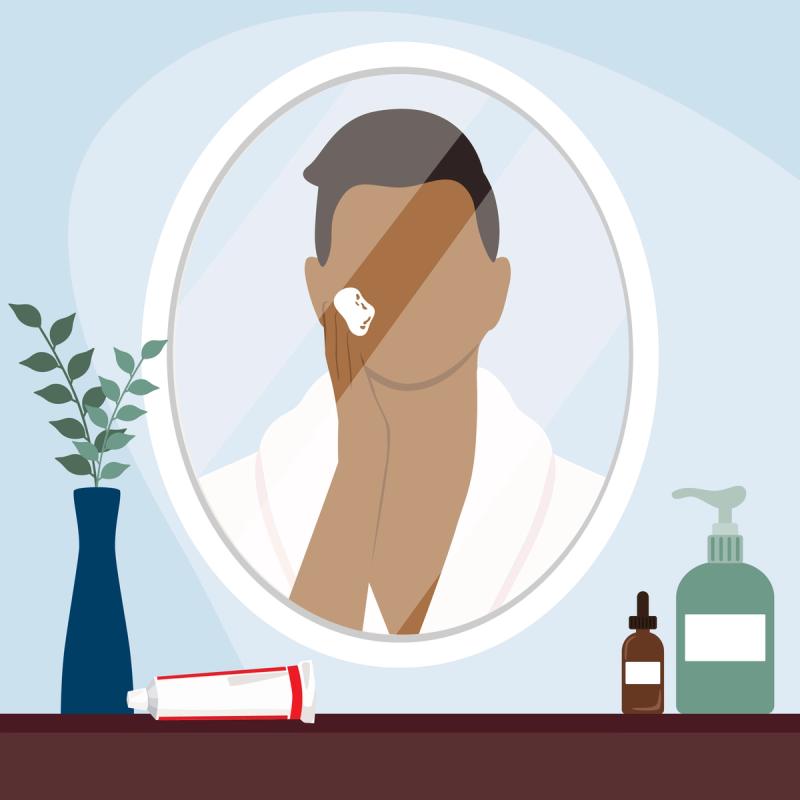If you're looking to improve skin tone, texture or fine lines, tretinoin and vitamin C are both backed by clinical evidence and shown to improve skin tone, texture and signs of aging like wrinkles and dark spots. But can they be used together? What’s the best way to apply them? And how do you avoid irritation?
This guide breaks down everything you need to know about using tretinoin and vitamin C.
Key Takeaways
Tretinoin and vitamin C treat similar skin concerns like wrinkles, dark spots and uneven skin tone — but they work differently and complement each other when used correctly.
Use vitamin C in the morning and tretinoin at night to get the most benefit with the least irritation. Vitamin C protects against sun damage, while tretinoin increases sun sensitivity. Your skin will be better able to fully benefit from these treatments if used separately.
Side effects are usually mild but more common with tretinoin (like dryness, peeling or burning); vitamin C may cause irritation or redness in sensitive skin.
Start slow and build up your tolerance. Begin with lower strengths and always pair these treatments with a moisturizer and a broad-spectrum SPF.
What are the differences between vitamin C and tretinoin?
Tretinoin is part of a group of treatments derived from vitamin A called retinoids. It’s known for helping prevent clogged pores, speeding up skin cell turnover and encouraging collagen growth. Tretinoin is well documented for improving acne, discoloration, rosacea and visible signs of aging. Although it’s backed by stronger clinical evidence than many other options, tretinoin can cause irritation and side effects, particularly when starting treatment. Because of its strength, tretinoin is only available with a prescription and cannot be purchased over the counter.1
Vitamin C is essential for healthy skin cell function and collagen production. While not as heavily studied as tretinoin2, vitamin C skincare has shown clinical evidence of improving firmness, strengthening the skin barrier, reversing hyperpigmentation and repairing damaged skin cells.3 However, there are only a handful of clinical studies on vitamin C and more research may be needed to fully understand vitamin C’s effects on skin.
The only reported side effects of vitamin C are mild irritation, redness or dry skin.4 Because it is gentler, many over the counter skincare products contain some form of vitamin C.
The main difference between vitamin C and tretinoin is the relationship to sun exposure. Tretinoin makes skin more sensitive to ultraviolet rays5 — while vitamin C is an antioxidant that, when paired with a broad-spectrum sunscreen, can help protect skin from sun damage.6

Can vitamin C and tretinoin be used together?
Yes, vitamin C and tretinoin can be used together. In fact, using both ingredients together makes them more effective. Vitamin C helps protect skin and tretinoin speeds up cell turnover, making them complementary.7
Benefits
Tretinoin speeds up skin cell turnover but can also increase skin’s sensitivity to the sun. Vitamin C has antioxidants to help protect from sun damage and reduce side effects from tretinoin.8 Using both together can help prevent and reverse signs of aging and hyperpigmentation. Both vitamin C and tretinoin can help boost collagen as well.9
Efficacy
In a head-to-head study, tretinoin and vitamin C increased collagen and reduced inflammation in participants at similar rates. However, only tretinoin was found to boost skin cell turnover to promote healing.10
Tips & Considerations
Keep these considerations in mind before starting vitamin C and tretinoin together:11
Results in individuals will vary. Always consult with your provider before mixing skincare products or prescriptions.
Apply tretinoin at night. It can increase skin’s sun sensitivity.
Apply vitamin C in the morning. The antioxidant properties will help protect against sun damage.
Follow application of either vitamin C or tretinoin with a moisturizer to avoid dryness.
For best results, use a broad-spectrum sunscreen daily to prevent sun damage and complement your skincare routine.

Clinically proven anti-aging prescriptions for less.
Consult online with a skin specialist for just $25, available 7 days/week. Get anti-aging prescriptions for $20/month.
Get StartedWhat are side effects of vitamin C and tretinoin?
Side effects of vitamin C include:12
Mild irritation
Redness
Dry skin
Side effects of tretinoin include:13
Redness
Dryness
Scaling
Peeling
Itching
Burning
Stinging
How do you introduce vitamin C or tretinoin into your skincare routine?

Before introducing any new product to your skincare routine, always consult your provider.
For best results, follow these tips for starting vitamin C:14
First, use a gentle cleanser.
Apply a few drops of a vitamin C serum to the face and neck.
Apply moisturizer and sunscreen.
If irritation occurs, switch use to every other day until skin adjusts.
For best results with tretinoin, follow these tips:15
Apply the medication in the evening to help minimize sun sensitivity.
Start by gently washing your face with a mild cleanser.
Let your skin dry completely. Using tretinoin on damp skin can make irritation worse.
Use only a pea-size amount and spread a thin layer evenly over your face.
Don’t wash your face again for at least an hour after applying.
Follow with a moisturizer to help lessen dryness or irritation.
Wear a broad-spectrum sunscreen of SPF 15 or higher, daily.
Can you use vitamin C in the morning and tretinoin at night?
Dermatologists recommend using vitamin C in the morning and tretinoin at night. Apply vitamin C to clean, dry skin and follow with moisturizer and a broad-spectrum sunscreen. This combination will help protect skin from environmental damage.
Tretinoin is best used at night to minimize sun sensitivity. Apply on clean, dry skin and follow with a moisturizer — preferably one with hyaluronic acid.16
Can you mix or layer vitamin C and tretinoin?
Dermatologists recommend using these two treatments separately to minimize irritation — vitamin C in the morning and tretinoin at night.
How RedBox Rx can help

RedBox Rx makes it easy and affordable to access prescription treatments like tretinoin and other anti-aging skincare.
Benefits of RedBox Rx include:
Transparent, affordable, flat rates for medications starting at $20/month.
$25 consultation with a U.S. licensed medical professional.
No insurance required. HSA and FSA eligible.
No office wait times or scheduling issues that are typical with physical medical practices.
FREE shipping directly to you. One-time, monthly and quarterly subscriptions available.
Get started on your journey toward better skin with our online assessment for acne, anti-aging or rosacea.


